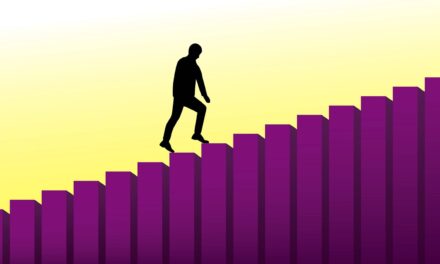Disclaimer: Startup Hive does not provide legal advice, nor do we guarantee any return on investment.
We’ve all heard the terms “cost,” “price,” and “value” used in business and at home. What do these words really mean and how are they related? Let’s take a closer look!
Cost and price are a part of your budget.
Price could also refer to the cost of something purchased, especially an item with a known value, or the rate at which one unit of currency exchanges for another (e.g., “The pound dropped against the dollar today”).
Are you confused yet? Good; because that means you’re learning something new.
If you want something that you value, it will cost you something, and what you pay for it is the price.
Here is an example:
I want to buy a new car. The price is $20,000. The cost is the price plus the energy it will take me to research the car I want, the time it will take me to get to the dealership, and the skills it will take me to negotiate the price I end up paying.
You can use cost to create a price that includes revenue and profit.
Costs are broken down into two parts: material costs and labor costs. Material costs are the materials used in making your product—for example, plastic for a toy car or leather for a pair of shoes. Labor costs are the people who work on making your products—for example, managers and assembly line workers at an electronics factory or designers and seamstresses at a clothing store.
By adding up all of these different kinds of costs, you can get an idea of what it would cost someone else to make your product themselves or buy one from someone else who has made it before (such as buying toys from China). This figure helps determine what price will be profitable enough for making those products again in future years (and thus keeping them available).
Value is related to price, but it’s subjective.
Value is related to price, but it’s subjective. The value of a product or service to the customer is what they perceive it to be. It may be high or low—and this can vary from customer to customer, company to company, and even industry to industry!
In the earlier example about the $20,000 car, the value would be the ability to travel from one place to another, to save time by using the car instead of public transportation, and possibly to save money in the long run.
An example of something that has high value for many people would be education. When you pay for an education at a university, no matter how much money you spent on it, there’s no guarantee that you’ll get a job after graduation—or even after completing all your courses. However, if you have passion for what you’re studying and believe in its importance (i.e., the role it will play in your life), then this may increase your perception of what the degree means for yourself and others around you.
All costs are not equal.
- Direct vs. Indirect: The most obvious direct cost is the money you spend on your business. The time, experience, skills, and energy that you put into it are all indirect costs.
- One-Time vs Recurring: This is self-explanatory. For example, if you copyright an idea, you will pay a one-time cost (the time to prepare the documents and the money to copyright it). If you maintain a website, you will pay a monthly or annual fee (that is the recurring cost).
- Fixed vs. Variable: “fixed” means that the cost remains steady even when demand fluctuates (i.e., it doesn’t depend on how much product or service you sell). Variable costs vary directly with the amount sold (e.g., raw material costs).
Knowing the difference between fixed and variable costs will help you track the health of your business.
Before you can understand how to take control of your business’s cost structure, you need to understand the difference between fixed and variable costs.
Fixed costs are expenses that don’t change with the amount of output produced. For example, if your rent is $1,200 per month, then it doesn’t matter whether or not you produce any products—your rent payment will be $1,200 every month.
Variable costs are expenses that change based on how much output is produced. As an example for a manufacturing company: if it takes 1 hour for one of your employees to make one unit of product (a “unit” could be anything from a single widget to 100 widgets), then labor costs would be classified as “variable” because they depend on how many units are made in a given period of time.
You should know and have a handle on all your business costs because they directly influence your ability to sell your products or services at a specific price.
Each business has unique costs and values as well as unique goals.
Let’s do a quick recap:
When you buy something (or before you sell it), it’s important to understand the difference between cost, price, and value. Cost is all the resources (including money) used to produce a product or a service. Price is what you pay for those goods and services, while value is the worth of that product in your eyes.
A business’s costs are related to revenue (money earned from selling its products) and profits (the amount left over after expenses have been paid).
A business’s revenue depends on many factors:
- How much people are willing to pay for its products;
- Whether there are competitors offering similar items at lower prices;
- Whether customers like certain aspects of its products more than others; etc.
Costs tend not to change much as long as sales remain strong; they’re fixed—you can’t get rid of them once they’re set up—and they’re usually independent of any individual sale or transaction. Costs don’t always match up with prices either: sometimes businesses charge more than what their costs were; other times they charge less than what their costs were; sometimes they charge nothing at all!
The takeaway here is that there isn’t always one relationship between cost and price—businesses have different goals depending on what stage in their life cycle they’re in right now. For example, a start-up company may decide to give away some products to promote its services, while an established company may choose to raise its price because its brand’s value is well established in the eyes of its target audience.
Conclusion
Every time you exchange currency or energy, there is a price or a cost associated with it. To be successful sooner than later, an entrepreneur should first focus on the quality and the value of the products and services exchanged (no matter if you are buying or selling).
We want to break the stereotypical notion that in order for a brand to be valued for its quality it has to be priced competitively high. At Startup Hive, we price our services and products with our target audience in mind first. We believe that good people do their best to make ends meet, and we reward people who invest in their growth; that’s why we focus on offering quality information at an affordable price. We have a mission to financially empower as many people as possible by providing them with a top-notch business education at a reasonable cost.
We hope that we’ve given you a better understanding of the difference between cost, price, and value. Now that you know how each factor impacts your business and its goals, you can use this information to make better decisions about pricing and profit in your business.
To your success,
—The Startup Hive Team.
At Startup Hive, we help creative entrepreneurs thrive beyond the gig economy by taking control of their financial life. If you consider yourself creative enough to get at least one of your ideas off the ground, we are here for it.
Schedule a Discovery Call and let us help you help people.





